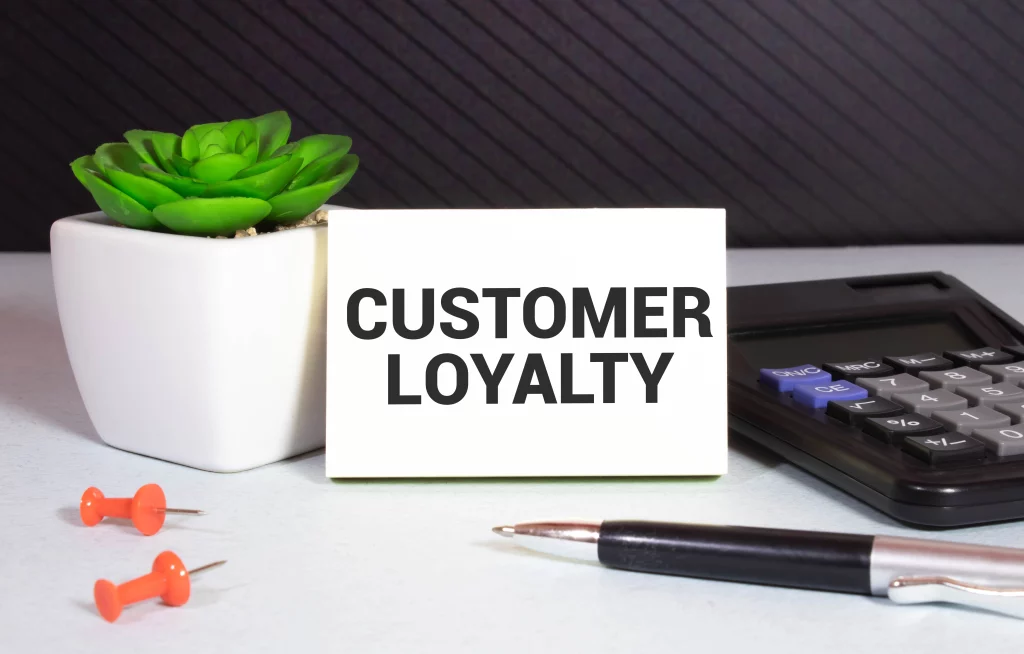Antoni Lacinai
• Use the Know-Show-Go-Flow formula
Tomorrow it’s time.
You are all welcome to join
Do you operate in the Mumbai area?
Even better then
C-U soon
By Team Antoni Explains
Building strong customer relationships is essential for any business that seeks long-term success. The Know-Show-Go-Flow formula is a powerful approach that helps companies to connect with their customers deeper, ensuring trust, loyalty, and long-term engagement. By knowing your customers, showing them you care, going the extra mile, and maintaining a consistent flow of communication, you can create meaningful relationships that last. Let’s explore how this formula can help you build stronger customer connections.
What is Customer Relations?
Customer relations refers to how businesses interact with customers to meet their needs and ensure satisfaction. It encompasses communication, problem-solving, and customer experience when dealing with a company. It’s about creating and maintaining positive customer interactions at every touchpoint.

Why Are Customer Relationships Important?
Customer relationships are vital because they foster trust and loyalty, turning one-time buyers into long-term supporters. A strong relationship encourages repeat business and referrals, which can significantly reduce marketing costs. Studies show that retaining an existing customer is far more cost-effective than acquiring a new one. Customers who feel valued are more likely to provide valuable feedback, helping businesses improve their products or services.

How to Build Strong Customer Relationships?
Building strong customer relationships requires effort and consistency. Here are some effective strategies:
- Personalization: Tailor your interactions based on customer preferences and behaviors. Personal emails or messages that address specific needs create a more personal connection.
- Regular Communication: Keep in touch with your customers through newsletters, updates, or personalized offers. Stay relevant and maintain visibility in their lives.
- Customer Support: Provide excellent customer service. Be responsive to inquiries and resolve issues promptly to show customers they are valued.
- Transparency: Be honest and upfront with customers. Whether it’s about pricing, policies, or service delays, transparency builds trust.

Benefits of Building Customer Relationships
There are numerous benefits to nurturing solid relationships with your customers, including:
- Increased Customer Loyalty: Customers who trust your brand are more likely to stay loyal and continue purchasing from you.
- Word-of-Mouth Referrals: Satisfied customers often share their positive experiences, leading to new customer acquisition through word-of-mouth marketing.
- Higher Revenue: Loyal customers spend more and make repeat purchases, boosting revenue.
- Valuable Feedback: Customers who feel connected to your brand are more likely to provide constructive feedback, helping you improve your offerings.

How to Improve Customer Relationships?
Even with good customer relationships, there is always room for improvement. Here are some ways to enhance customer relations:
- Ask for Feedback: Regularly collect feedback from customers to understand their needs better. Use surveys, reviews, or direct communication.
- Reward Loyalty: Offer loyalty programs, discounts, or exclusive perks to repeat customers to show appreciation for their continued support.
- Personal Touches: Send personalized thank-you notes or birthday messages to make customers feel valued and appreciated.
- Stay Proactive: Anticipate customer needs and offer solutions before they ask. This can include product recommendations or alerting them to any potential issues.

What Makes a Good Customer Relationship?
A good customer relationship is based on trust, mutual respect, and open communication. It’s about more than just transactions—building rapport and understanding customer needs more deeply. Key attributes of a strong relationship include:
- Consistency: Delivering consistent quality in products and services over time.
- Empathy: Understanding and responding to the customer’s emotions and challenges.
- Reliability: Being dependable, especially when handling problems or requests.

9 Methods for Building Customer Relationships
To establish lasting relationships with your customers, consider implementing these nine methods:
1. Prioritize Excellent Customer Service
Providing excellent customer service is the cornerstone of any customer relationship strategy. Customers expect their concerns to be addressed promptly and efficiently. Customer service is the touchpoint where businesses can make a lasting impression, so offering timely, knowledgeable, and empathetic support is crucial.

How to Improve Customer Service
- Train your staff to handle customer queries effectively.
- Implement multi-channel support, including phone, email, and social media.
- Use feedback mechanisms to improve your service continuously.
Companies prioritizing customer service tend to build lasting, trust-based relationships, ultimately enhancing customer retention.
2. Personalize Your Interactions
Personalization is a powerful tool in building relationships with your customers. People want to feel recognized and valued by the companies they engage with. Using customer data to tailor interactions can significantly improve customer satisfaction.

Personalization Tips
- Send personalized emails based on customer behavior and preferences.
- Offer tailored product recommendations based on past purchases.
- Address customers by their first name in communications.
Customers who feel a personal connection with your brand are more likely to become loyal and repeat buyers.
3. Build Trust Through Transparency
Transparency breeds trust, a key ingredient in fostering long-term customer relationships. Being open about your business practices, pricing, and product information shows customers that your company is trustworthy and reliable.

Ways to Build Transparency
- Be upfront about your pricing and avoid hidden fees.
- Share information about your supply chain and business ethics.
- Be honest when something goes wrong and offer clear solutions.
Trust is not built overnight, but a transparent approach will ensure customers stay with you for the long haul.
4. Engage on Social Media
Social media platforms are ideal for building customer relationships by engaging them in meaningful conversations. Businesses can create a community that fosters loyalty by responding to comments, sharing valuable content, and participating in discussions.

Social Media Engagement Tactics
- Respond to customer comments and messages promptly.
- Share behind-the-scenes content to create a more authentic connection.
- Run polls, contests, and interactive campaigns to encourage participation.
Being active and engaging on social media helps businesses stay connected with customers on a personal level.
5. Implement a Customer Loyalty Program
Loyalty programs are proven to strengthen customer relationships by rewarding repeat customers for their continued patronage. Offering exclusive deals, discounts, or points for future purchases creates a sense of belonging and value.

Key Elements of a Successful Loyalty Program
- Offer tiered rewards for different levels of customer engagement.
- Provide exclusive offers for members of your loyalty program.
- Make it easy for customers to understand and redeem rewards.
A well-designed loyalty program encourages repeat business and increases customer lifetime value.
6. Solicit and Act on Customer Feedback
Asking for customer feedback demonstrates that you value their opinion and are willing to improve based on their suggestions. It also provides insights into what’s working and what isn’t, helping businesses continually enhance the customer experience.

How to Collect Feedback Effectively
- Use surveys and feedback forms after key interactions.
- Monitor online reviews and respond appropriately.
- Implement feedback-based changes and let customers know how their input contributed to improvements.
You demonstrate a commitment to improving the customer experience by listening to and acting on feedback.
7. Offer Educational Content
Providing educational content is a great way to offer customers value beyond your products or services. Educational resources such as blog posts, tutorials, and webinars can establish your business as a trusted source of information and keep customers engaged.

Types of Educational Content to Offer
- How-to guides that help customers get the most out of your products.
- Webinars featuring industry experts that address common pain points.
- Regular blog posts on topics relevant to your customer base.
By offering valuable content, you position your brand as a thought leader in your industry and keep customers returning for more.
8. Create Emotional Connections
Beyond transactions, emotional connections are what keep customers loyal to a brand. Companies that can tap into customers’ emotions through branding, storytelling, and meaningful engagement tend to build stronger, long-lasting relationships.

How to Build Emotional Connections
- Tell your brand story and let customers know the people behind the company.
- Use emotional triggers in your marketing campaigns, such as customer success stories.
- Show your brand’s human side by participating in causes and giving back to the community.
Customers who connect emotionally to a brand are likelier to remain loyal and advocate for it.
9. Provide Consistent Value
Finally, continually providing value is essential for maintaining strong customer relationships. Customers expect more than just products; they want an ongoing, valuable relationship with their chosen brands. Businesses can ensure long-term engagement by delivering consistent quality, offers, and communication.

How to Deliver Consistent Value
- Regularly update customers with new offerings and useful content.
- Maintain high standards of product quality and customer service.
- Reward loyal customers with exclusive benefits and early access to new products.
Providing value ensures customers remain invested in your brand, making them more likely to return and recommend your business to others.
FAQS
Small businesses can build relationships by offering personalized service, engaging with customers on social media, and rewarding loyalty through special perks or discounts.
Social media is a powerful tool for engaging with customers, providing real-time responses, and building a community around your brand.
The key is transparency. Apologize, take accountability, and offer a solution or compensation to win back their trust.
Using customer names and sending offers or recommendations based on their purchase history are effective ways to personalize communication.
Conclusion
Building strong relationships with your customers through the Know-Show-Go-Flow formula is a proven strategy for business success. It ensures customer satisfaction and creates a loyal customer base that can drive sustainable growth. By knowing your customers, showing them you care, going the extra mile, and maintaining a steady flow of communication, you can create loyal and satisfied customers who will support your business long-term.


